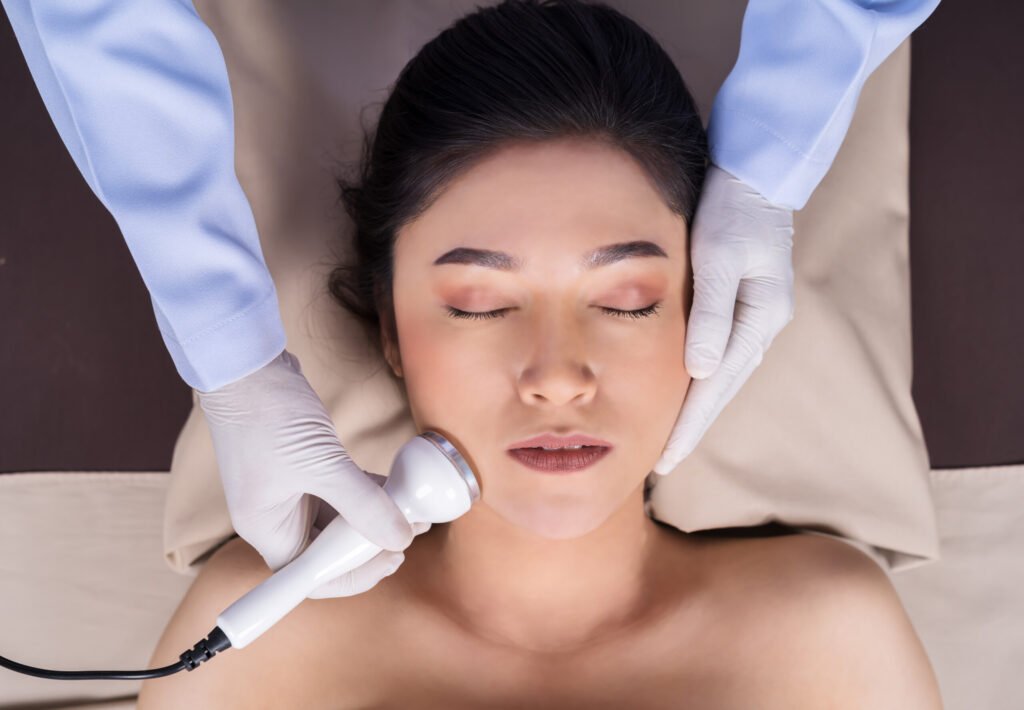Korean skincare is world-renowned for blending traditional wisdom with cutting-edge science. Among its most sought-after innovations is the Collagen Booster Facial—a treatment that goes beyond surface-level pampering to work at the cellular level. But what’s the real science behind these facials? How do Korean clinics use them to restore youthful, glowing skin?
Let’s dive into the biology, technology, and techniques that make collagen facials in Korea a scientific skincare breakthrough.
🧬 What Is Collagen, and Why Is It Crucial for Skin?
Collagen is the most abundant protein in the human body, making up about 75–80% of your skin’s structure. It acts like scaffolding, providing:
- Firmness and elasticity
- Plumpness and volume
- Smooth texture
- Resilience to environmental damage
As you age—especially after 25—collagen production naturally declines by about 1% each year. By your 40s, this drop accelerates, leading to visible signs of aging: sagging, fine lines, dullness, and thinning skin.
🔬 The Science Behind Collagen Booster Facials
Korean collagen facials work by activating the skin’s natural regenerative processes. These treatments target fibroblasts—cells responsible for collagen production—by delivering specific stimuli, such as controlled micro-damage, heat, or light.
This “controlled stress” prompts the skin to:
- Increase blood flow and oxygenation
- Activate fibroblasts
- Produce new collagen and elastin fibers
- Accelerate cellular turnover
As a result, the skin becomes firmer, smoother, and more radiant—without surgery or downtime.
🔧 Key Technologies Used in Korean Collagen Facials (2025)
Korean clinics in 2025 offer highly advanced tools and techniques designed to stimulate collagen from the inside out:
1. Microneedling (Collagen Induction Therapy)
- How it works: Tiny needles create micro-injuries in the skin.
- Scientific effect: Triggers a wound-healing response that increases collagen and elastin production.
- Boost: Often paired with collagen-rich serums, peptides, or growth factors to enhance absorption through micro-channels.
2. Fractional Laser (e.g., LaseMD, Fraxel)
- How it works: Delivers controlled thermal energy into the dermis.
- Scientific effect: Breaks down old collagen and encourages synthesis of new fibers.
- Result: Improved texture, tightened pores, and reduced wrinkles.
3. Radiofrequency (RF) Therapy
- How it works: Uses electrical currents to heat deep layers of skin.
- Scientific effect: Stimulates fibroblasts to remodel and rebuild collagen.
- Popular device: Sylfirm X, known for combining RF with microneedling for dual action.
4. Ultrasound (e.g., Ultherapy)
- How it works: Focused ultrasound energy penetrates the SMAS layer (below the skin).
- Scientific effect: Tightens skin and boosts deep collagen regeneration over time.
5. LED Light Therapy (Red/Near-Infrared)
- How it works: Non-thermal light penetrates skin layers.
- Scientific effect: Increases ATP in cells, energizing fibroblasts to produce more collagen.
- Bonus: Reduces inflammation and supports skin healing.
6. Peptide & Growth Factor Infusion
- How it works: High-potency serums are infused into the skin via electroporation or after needling.
- Scientific effect: Peptides mimic natural skin signals that stimulate collagen synthesis.
🧴 What Makes Korean Collagen Facials Different?
Korean clinics excel not only in using advanced technology but also in their multi-layered treatment protocols:
- Customized treatment plans using AI skin diagnostics
- Synergistic combinations (e.g., microneedling + RF + collagen masks)
- Holistic aftercare with calming serums, LED recovery, and sun protection
- Daily skincare integration with K-beauty collagen creams, ampoules, and ingestibles
This scientific layering approach maximizes results while maintaining the skin’s integrity and hydration barrier.
💡 Benefits Supported by Science
Studies have shown the following benefits of collagen-stimulating treatments like those used in Korean facials:
| Benefit | Mechanism |
|---|---|
| Improved skin firmness | Collagen remodeling in dermis |
| Reduced fine lines and wrinkles | Stimulation of new collagen/elastin |
| Better texture and tone | Enhanced cell turnover |
| Smaller pores | Tightening of dermal structure |
| Brighter complexion | Increased blood flow and oxygenation |
| Long-term anti-aging | Sustained collagen regeneration |
💆♀️ What Happens During a Collagen Booster Facial?
A typical session in a Korean clinic includes:
- Consultation & Skin Analysis
Using AI imaging to assess elasticity, pore size, and sun damage. - Cleansing & Prep
Removal of impurities to ensure deep penetration of active ingredients. - Main Collagen Therapy
Depending on the method chosen: microneedling, laser, RF, ultrasound, or LED. - Serum Infusion & Soothing Mask
Delivering collagen peptides, hyaluronic acid, and antioxidants. - Aftercare & Protection
Calming serums, SPF, and at-home regimen advice.
🔬 Collagen Boosting Isn’t Instant—It’s Progressive
Unlike fillers or Botox, collagen facials don’t provide overnight results. Instead, they:
- Work gradually over 3–6 weeks
- Show visible results by session 3–4
- Deliver long-term improvements in skin quality with consistent treatment
That’s why many Korean clinics recommend monthly sessions and ongoing collagen skincare at home.
🌏 Ideal for All Skin Types—Including Sensitive Skin
One reason for the global popularity of Korean collagen facials is their gentle yet effective nature. By tailoring energy levels and actives to individual skin types, clinics ensure:
- No harsh chemicals
- Minimal irritation
- Faster recovery
- Suitability for acne-prone, aging, and sensitive skin
🧬 Final Thoughts: Where Science Meets Beauty
The collagen booster facials offered in Korea are a powerful example of where dermatological science meets modern beauty. Whether through microneedling, lasers, RF, or LED, these treatments are grounded in real biology and proven results. With expert guidance, cutting-edge devices, and a results-driven culture, Korean clinics continue to set the global standard for safe and effective skin rejuvenation.




